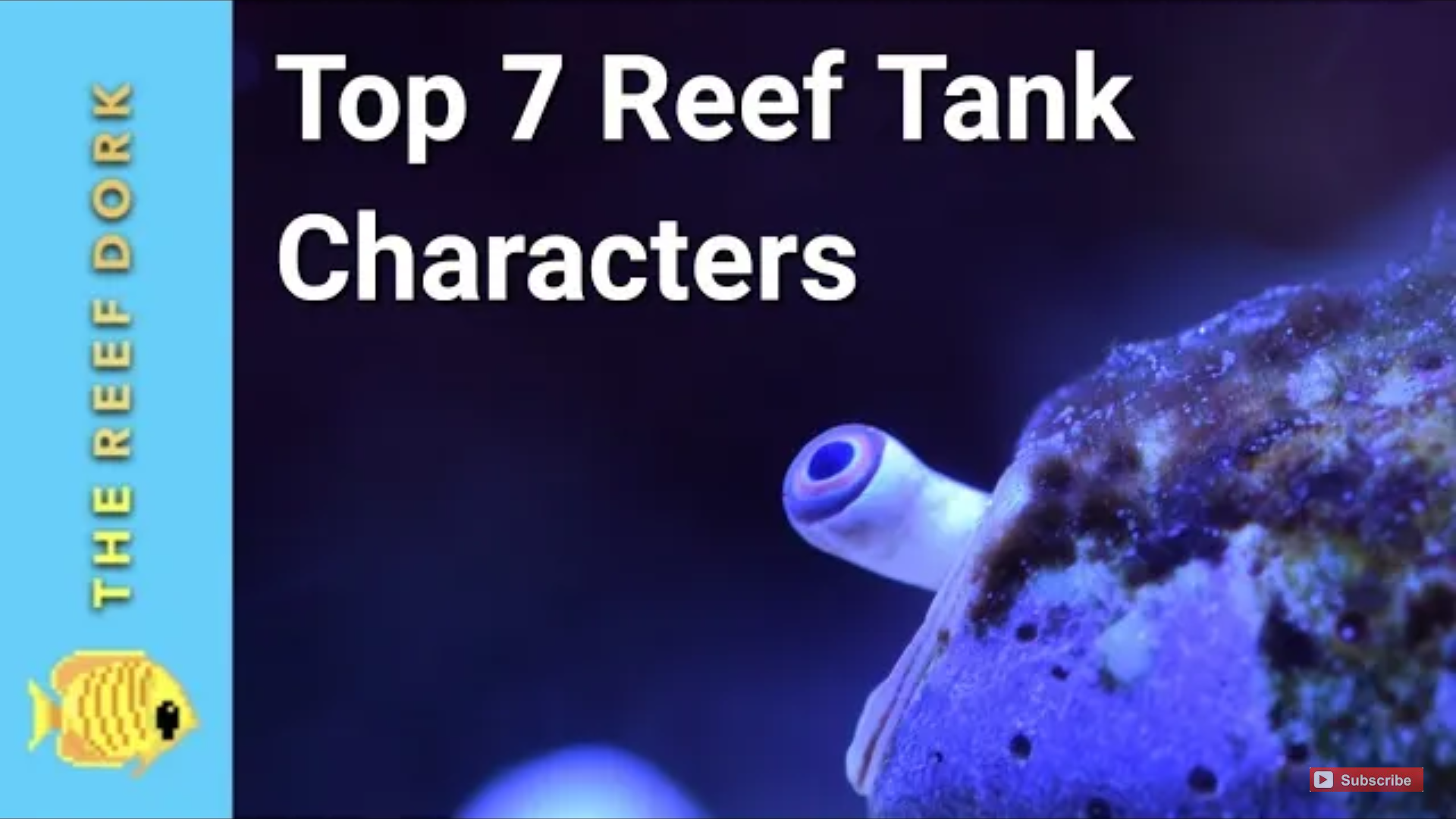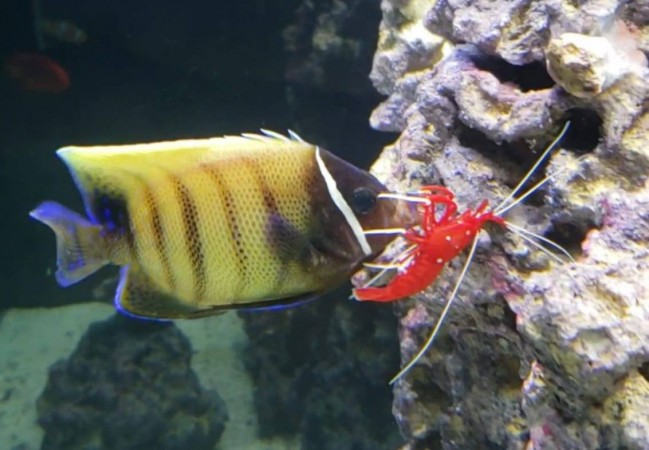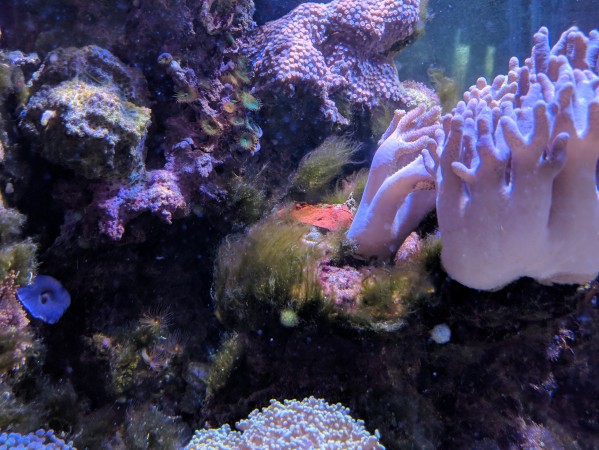- Name:
Porcelain Anemone Crab
(View AKA's) - Family: Porcellanidae
- Species: Crab
- Scientific Name: Neopetrolisthes ohshimai
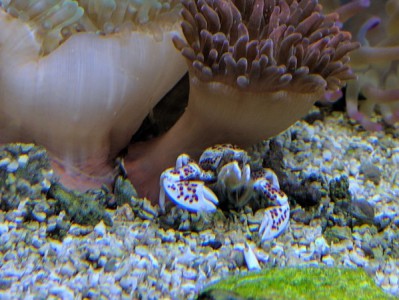

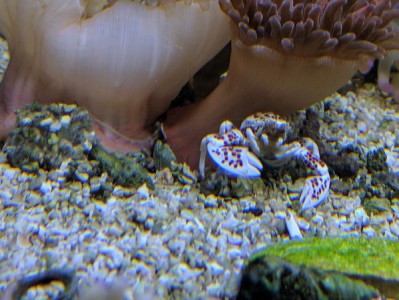
General info about Porcelain Anemone Crab
The Porcelain Crab is common throughout the tropical oceans of the world, and has a flat, round body with two large front claws. They are brown and orange in coloration with bright blue spots. These crabs have a pair of front arms called maxillipeds, which have ends that are feather-like in appearance. They use these appendages to filter the water for any passing food. They are peaceful and interesting invertebrates for the marine aquarium. Porcelain Crabs live together in pairs typically found within or under rocks in nature. The ideal aquarium will contain plenty of live rock for both hiding and feeding, and will not contain any fish or invertebrates that may bring harm to these peaceful invertebrates. They are reef safe, and will not harm other invertebrates or corals.
Porcelain Anemone Crab Diet & Nutrition
Porcelain anemone crabs are omnivorous species that feed off by filtering feeders and planktons out of water. They also eat mucus excreted by anemones which provides a natural diet, and clean up debris from within its tentacles.
Determining Sex of Porcelain Anemone Crab
Determining the sex of porcelain anemone crabs can be done by examining their underside thoroughly. Male crabs have triangular shaped plates in its shell, while female crabs have rounded plates.
Breeding & Spawning Porcelain Anemone Crab
These species breeds as most crustaceans do. The eggs of the female crabs are fertilized by the male ones by secreting their sperms. These fertilized eggs are then carried under the body of female crabs. By the time these eggs hatch, the larvae will go through a planktonic stage before they grow into their adult forms.
Porcelain Anemone Crab Origin
These species originated in Indo-West Pacific Ocean: Maldives to Australia.
Caution with Porcelain Anemone Crab
Porcelain anemone crabs inhabit coastal reefs or fish-only aquarium. Corals may be added to their environment in an aquarium, and they are safe to be mixed with other invertebrates as seen living with large host anemones. But, it should not be together with larger crabs because it won't be able to defend its turf.
Acclimating Porcelain Anemone Crab
When taking the invertebrate out, expose it to as little light as possible and turn the aquarium lights off. Place the invertebrate container bag in the aquarium and let it float for 15 minutes. Open the bag and pour in 1 ounce of aquarium water into it, do so every 5 minutes until the water inside the bag has doubled. Wait for 5 minutes before pouring off half the water inside the bag into the aquarium. Then, slowly place each animal in the aquarium. Turn the aquarium lights on after an hour or more.
Original Detail
| Name | Species | Family | Scientific Name | More Detail | Added by |
|---|---|---|---|---|---|
| Porcelain Anemone Crab | Crab | Porcellanidae | Neopetrolisthes ohshimai | The Porcelain Crab is common throughout the tropical oceans of the world, and has a flat, round body with two large front claws. They are brown and orange in coloration with bright blue spots. These crabs have a pair of front arms called maxillipeds, which have ends that are feather-like in appearance. They use these appendages to filter the water for any passing food. They are peaceful and interesting invertebrates for the marine aquarium. Porcelain Crabs live together in pairs typically found within or under rocks in nature. The ideal aquarium will contain plenty of live rock for both hiding and feeding, and will not contain any fish or invertebrates that may bring harm to these peaceful invertebrates. They are reef safe, and will not harm other invertebrates or corals. |
PalaciosAn |
Changed by users
| Submitted Date | Submitted By | Status | Action |
|---|


